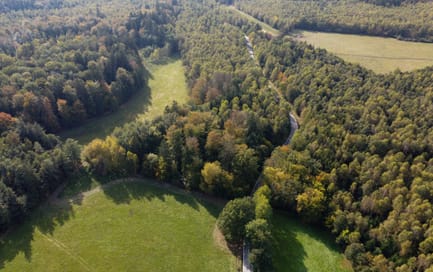
From Trash to Treasure

Energy transition and circular economy go hand-in-hand, both optimizing for an ultimate vision of sustainability. Where they overlap is around the industrial processes that generate energy, adjacent to energy production, or use energy in a significant way. Creating a circular economy means that products are able to be used for longer or for more purposes, waste products are turned into feedstock for creation of new products, and that there are industrial pathways in place for recycling, repurposing, and recovering within the product’s lifecycle. We see the circular economy divided into two main areas:
Waste to energy, or creating electricity, heat, or fuels out of trash or organic waste. Landfill to biogas, dairy manure to RNG, municipal solid waste to syngas are all thriving examples of these pathways. Most of these technologies have existed for decades in order to reduce the operating costs and amount of land occupied by waste management facilities, but we’ve seen a recent “renaissance” of activity and development. The unusual tenure of the technology (derisking it in many people’s eyes) combined a macro focus on decarbonization and expanding regulatory programs like LCFS have led to WTE projects skyrocketing in number.
The production of goods from waste resources or industrial by-products. The utilization of CO2, normally a by-product or waste product, in producing chemicals, carbonates, or synthetic graphite has been a big topic. Plastics recycling has been and continues to be a dominant focus in this space. Creating chemical precursors like methanol or ethanol or hydrogen from excess syngas streams or waste biomass can be the industrial bridge to creating more sustainably produced plastics.
Creating these pathways is no easy task – and being able to sustain them over a long period of time will be even harder. A big challenge with circular economy pathways is maintaining the balance between supply and demand. An instable waste stream can cause a feedstock shortage, disrupting commercial agreements and leading to price volatility. Because the components of a circular economy are so interdependent on other processes, a circular economy is vulnerable to the domino effect. One sequence of disruptions can completely eliminate the viability or need of a pathway.
This brings us to the ultimate challenge: commercializing circular economy pathways for the long term. Like other industrial-scale projects that we have seen in the energy transition space, circular economy projects will require a combination of technology development and project development, two different sets of expertise and ecosystems. Moreover, the traditional infrastructure development mindset relies on having high visibility of offtake and feedstock. Both of those are hard to secure long term in a circular economy, where inputs and outputs are always shifting according to market dynamics.
The name of the game for circular economy is flexibility. Having optionality around feedstocks and offtakes will generate an advantage for projects, especially those that deal with intermediary products. Most of the projects we look at don’t future test their pathways, only basing their narrative on one particular macro outcome. Circular economies are not static, especially as we deal with the behavioral science surrounding waste vendors. A big question is what happens when a waste turns into a valuable product, one that merits a premium vs a discount? We saw that happen with flared gas to bitcoin mining. It’s for that reason that for companies looking to commercialize circular economy projects, we recommend extensive scenario planning.
In any case, the circular economy is an exciting vision that is flourishing now. WTE, which was once the dirty cousin of wind and solar in the renewable energy industry has turned into a fast-growing behemoth. Recycling is not so consumer driven anymore and scaling up to replace industrial processes. We’re excited to see this space grow and what comes out of it.

